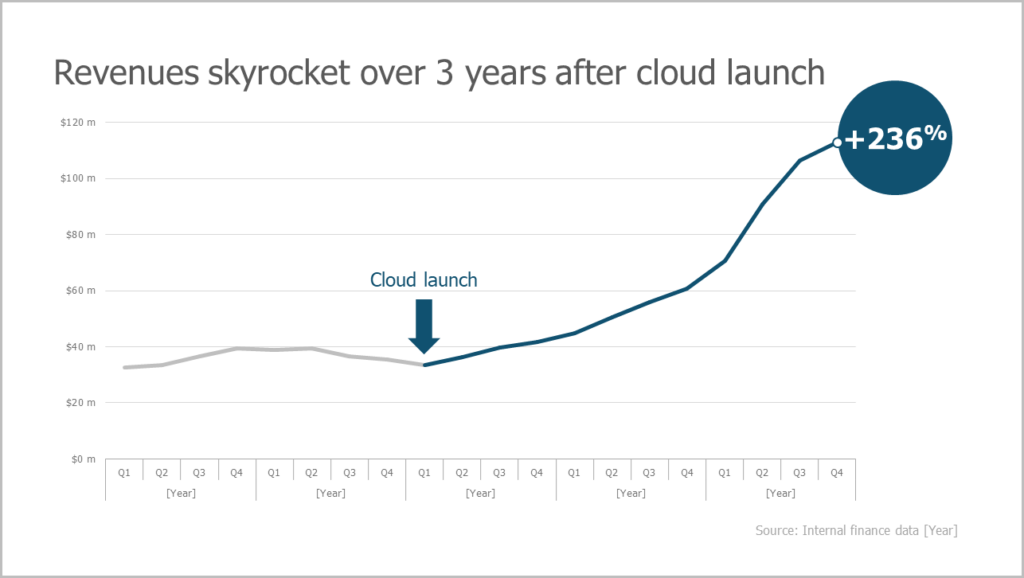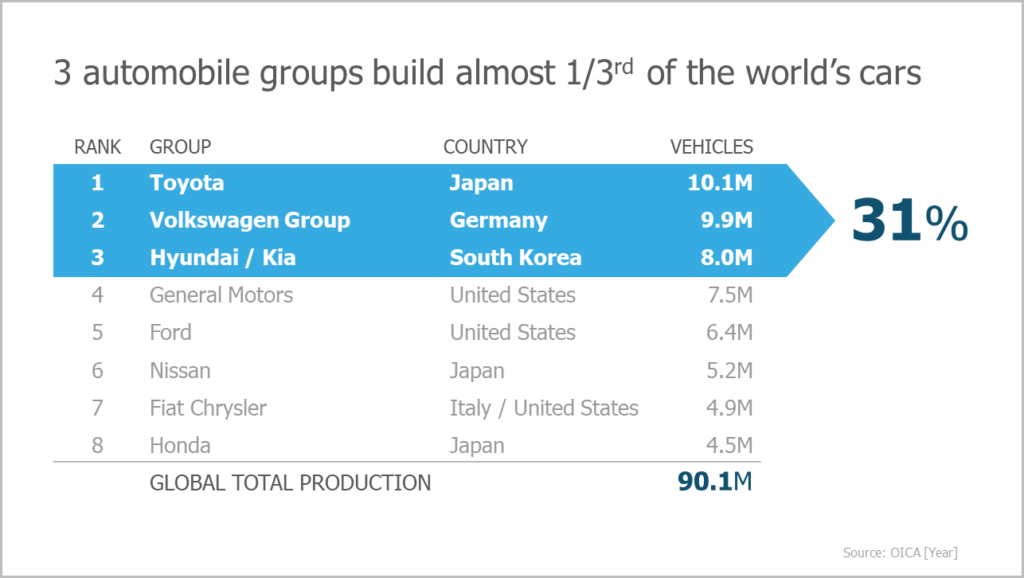There are many charts options for displaying your data. So how do you choose the one that is going to make your numbers shine? Better yet, how do you know which chart will tell the most memorable, impactful story?
Getting this right is critical, and thankfully, not difficult to figure out…with the right mindset. First though, you must understand this fundamental rule of business storytelling: always have a simple, easily discernible, key message. In other words, what’s the one thing you want your audience to remember?
Incredibly enough, many data presenters don’t actually know what their chief message is. Instead, they try to cram as much data as they can into their chart (after chart after chart…hoping their boss sees the point to it all). It’s time to stop thinking that just because you’ve collected all these numbers, you should flaunt all of them. Great data storytelling requires you to identify key insights from your data and include only information that directly support that message. Extraneous data can be left out or visually subdued (if you’re keeping it as context to support your key data points).
So, how do you choose a chart that tells a story and drives action? The main thing to remember is that the purpose of all charts is to show the relationships in your data. Think about what charts or tables best feature the relationships that best fit the data story you are trying to tell.
Here’s a quick primer on choosing the right chart type for your data story:
LINE GRAPHS

Line graphs show changes or relative changes to something over a period of time. Notice how the most significant findings are called out directly to the viewer. The data points you report should always be key elements of your story. Ex: “Sales are trending upwards since the Cloud launch because… which means… and so…” Good rule of thumb? Use a maximum of 5 lines per chart for easiest viewing and understanding.
BAR GRAPHS

Bar graphs display a relationship between variables, usually for the purpose of comparison. This head-to-head comparison of project delivery shows the viewer the story instantly by highlighting the key information in green, adding a callout, and subduing the rest. Always keep charts two-dimensional for easy interpretation.
PIE CHART 2.0: THE DONUT CHART

Pie charts (and the more modern version, donut charts) show how percentages relate to each other within a whole. The pie or donut should always equal 100% of a meaningful total. Each wedge or segment must be a percentage of that total. This chart tells an instant visual story about what dominates a specific category. The donut improves the pie because it is visually easier for the eye to discern the difference in linear segments than the more nebulous area of pie slices. Pies and donuts are often used for demographic or budgetary data. Important to note: these types of charts can only be used to represent a snapshot of one moment in time.
TABLES

For times when you believe your audience will benefit from viewing a larger universe of data, use a table. Tables display data details which would be lost in graphs or charts. It is still critical that you visually call out your most significant findings in order to let that table tell a story or move your larger story along. Notice above how the shaded rows support the headline of the slide to let the viewer zero in instantly on important information.
Turn Your Numbers Into Narratives
When your next meeting is on the horizon, don’t forget to first examine your data insights and isolate your key message. Consider what metrics will support your story and help it pack a punch – don’t flash unnecessary info just because you’ve got it. Then, feature primary data in the proper chart and keep the rest of your data hidden, but readily available if needed – perhaps in slide notes, hidden slides, or other supportive materials. For powerful data storytelling, the right chart will get you well on your way.
Want to learn more about developing a story with your data? The Presentation Company has data storytelling workshops for you and your team. Get in touch with us today!
